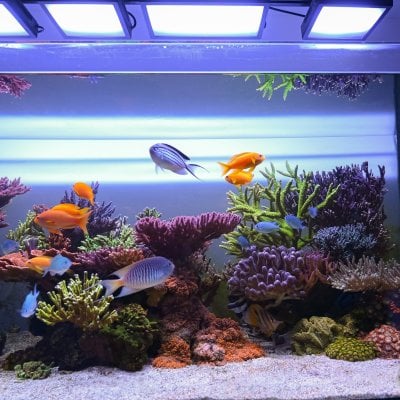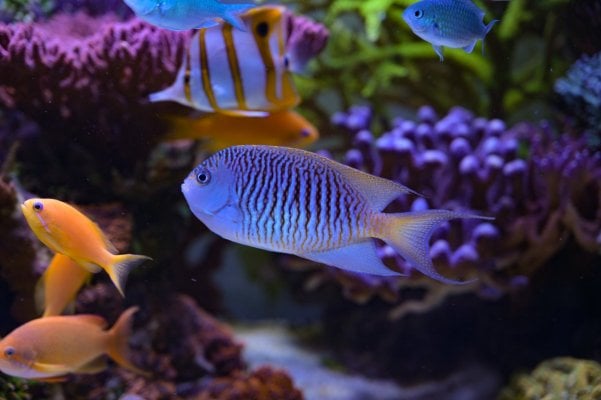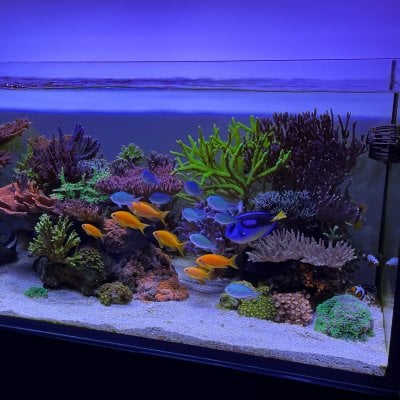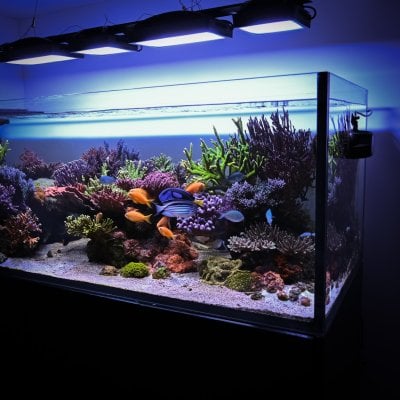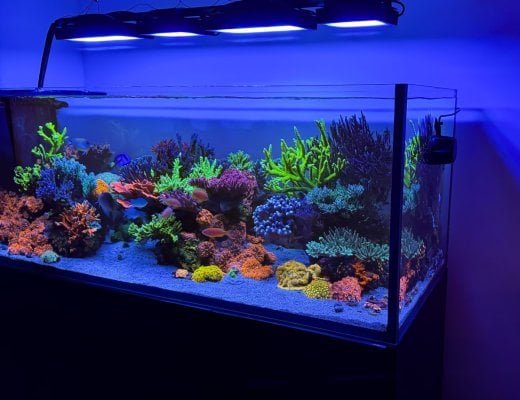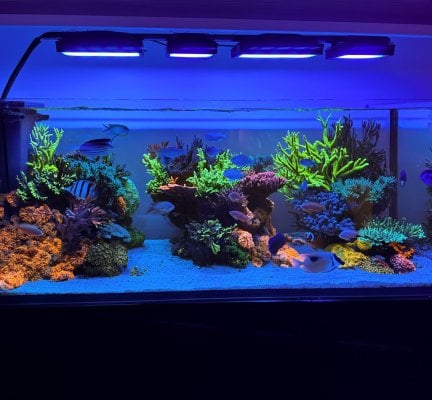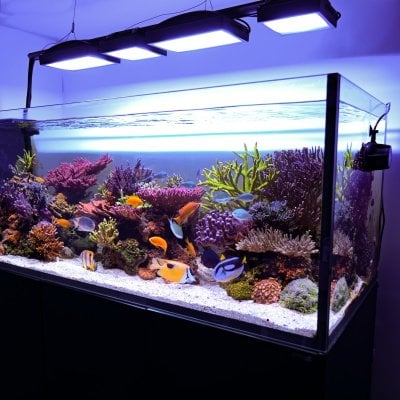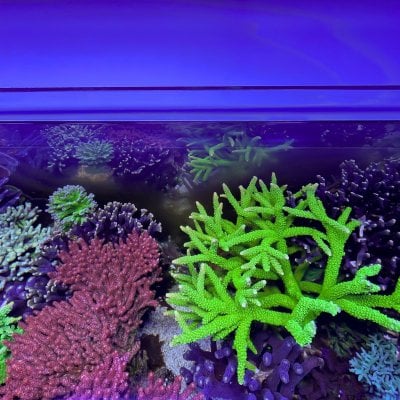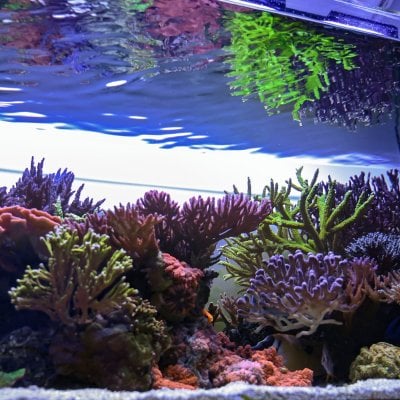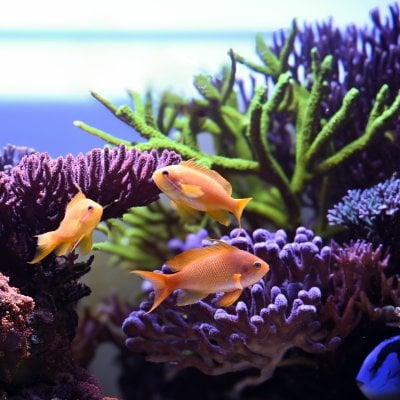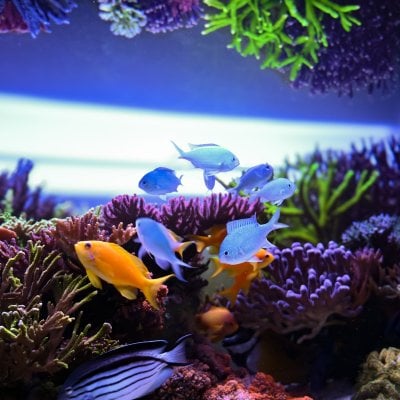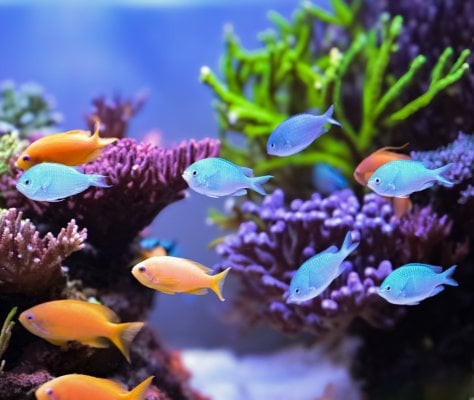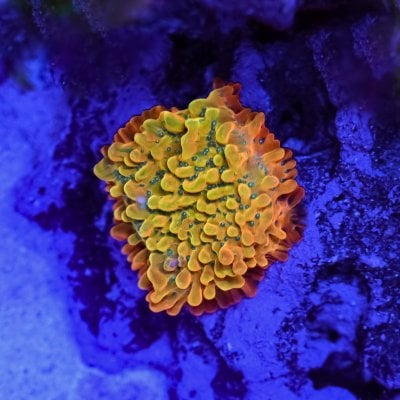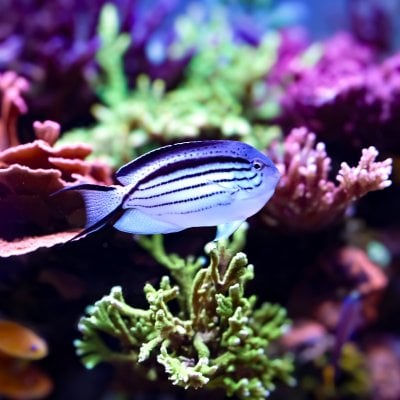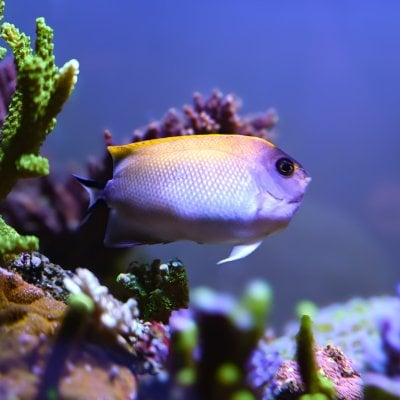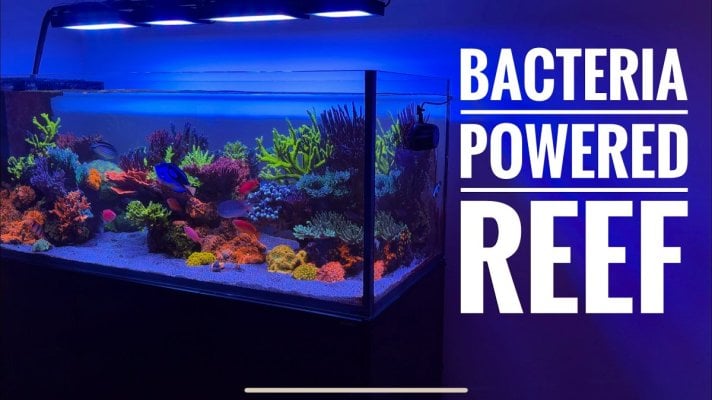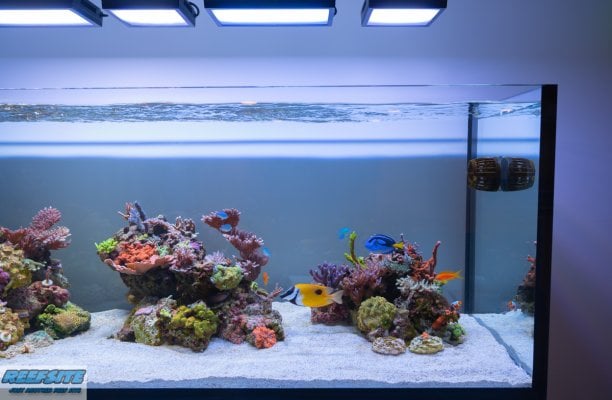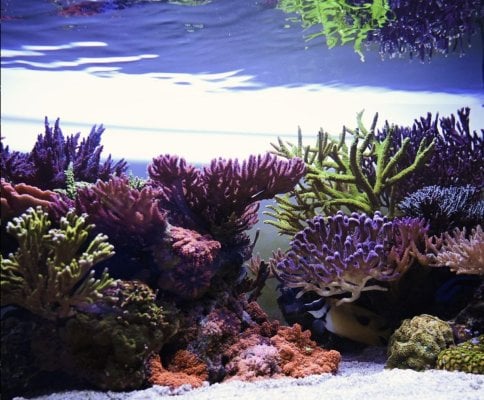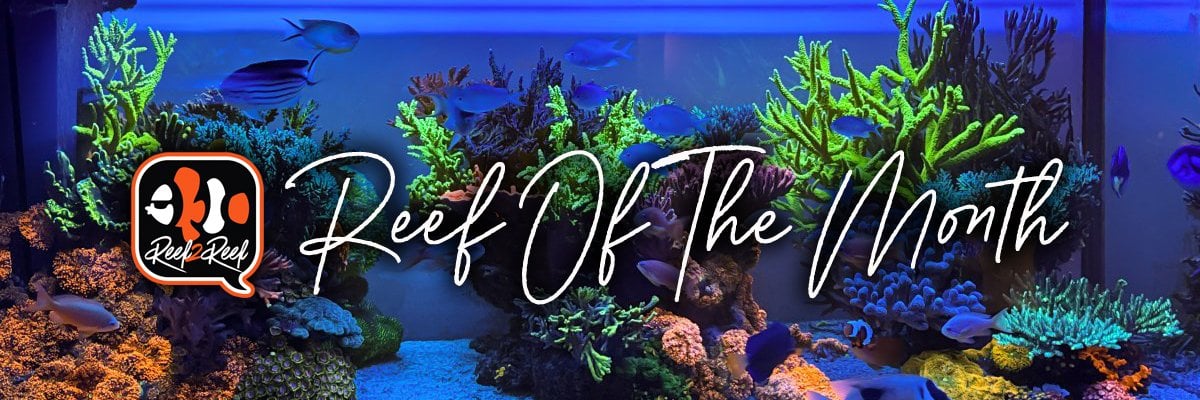R2R Username: @SunnyX
My Tank Thread:
Rimless Reef 4.0
YouTube: @REEFSITE
Instagram: @REEFSITE
Facebook: @REEFSITE
Website: www.ReefSite.com
Then...
Now...
So many things in life, come down to chance encounters. I was fortunate to start my first aquarium at the age of six and have been learning and having a great time ever since. At the behest of a high school science teacher, my first reef was setup at age 17, and since then I have been focusing on ways to constantly improve my system and the overall hobby.
Over 25 years I have experimented much and believe I now have a philosophy that works. During that time, I have had several aquariums, each varying in style and methodology. At one point in time, I also ran a coral propagation business, Pro Corals. The most popular coral released during that tenure, and one that is still a fan favorite, is the PC Rainbow.
There were many ups and downs, and just about every piece of equipment under the sun was used and experimented with. From bio-pellets, kalk, and algae reactors, I tried it all. And through that experience I came to the realization that simplicity is genius, and that nature knows best.
System Profile:
- Display: Waterbox 6025 60.5”x26”x24” 195gl total system volume
- Lighting: Ecotech Radion G5 PRO (2) XR30 (2) XR15
- Water Movement: (2) Ecotech Marine Vortech MP40 QD (1) Tunze Stream 3
- Return Pump: Ecotech Marine Vectra L2
- Skimmer: Ultrareef Akula UKS-200
- Mechanical Filtration: (4) Filter Socks
- Chemical Filtration: Activated Carbon
- Biological Filtration: KZ Zeovit Bacteria Reactor
- Sump Volume: 45GL
- Top-off: Tunze Osmolator 3155
- Kalkwasser: Tunze Calcium Dispenser
History:
The current system was setup May 2022. The system was an upgrade from a much smaller one, with livestock, rock and water transferred over. In a years’ time the system has grown out tremendously, and I am already planning on a reset.
I wanted an all in on solution, so I purchased a Waterbox 6025 Peninsula aquarium. I like the aesthetics of having the overflow box off to the side, and out of sight. This opens many opportunities for aquascaping and creating more natural looking videos and images.
The system is SPS dominated, and setup in a design that allows for the ideal flow of water while maintaining overall aesthetics. I like to include a good bit of negative space in my design, attempting to utilize the golden ratio of design as much as possible. Real live rock from the Atlantic Ocean is used as I believe there is no substitute for live rock. Dry rock is great, but I wouldn’t use it without the inclusion of at least a few pounds of live rock. Much of the issues you are seeing these days in modern systems is due to the use of sterile rock and the lack of diversity or the exclusion of required creatures and bacteria.
The Foundation:
Much of what we do today can be traced back to one man, considered by many to be the founding father of our hobby, Lee Chin Eng. More than 60 years ago he attempted what many thought to be unattainable, successfully keeping corals in an enclosed aquarium. And not just keep them but have them grow and thrive. The natural method, as it is referred to, using live rock, an air stone for water flow and natural sunlight he was able to maintain successful reef aquariums, helping to pave the way for countless reefers who have taken his methods and continued pushing the hobby forward. Lee’s Natural method helped pave the way for the Berlin Method, the foundation and base of today’s reefing aquariums. The biggest difference between both methods being that a protein skimmer in used in the Berlin style of reefing.
In nature, everything is in balance. All prey has a predator, and in this way, there is a system of checks and balances. While our systems do not harbor the diversity of nature, we must strive to emulate it as much as possible. Know that for every action there will be a reaction. If you remove a form of algae or pest something weaker or stronger will take its place. This is why I am such a strong advocate of carbon and bacteria dosing. Allowing bacteria to be the main consumer of nitrates and phosphates frees my system from unwanted algae and cyanobacteria. Carbon dosing is and will for all time be a cornerstone in my system.
If you’re interested in learning more about Carbon dosing please check out my other article concerning it: Bacterial Driven System: A Recipe for Success.
Water Circulation and Flow Summary and Objectives:
I have always pushed for heavy flow, many times more powerful than what has been recommended. Flow is one of those things that can be hard to dial in as there are a multitude of factors to consider, not least of all, the positioning of the corals and rockwork. When setting up a new system, I try to use as little rockwork as possible, and arrange the system so that the corals can grow around the flow provided. This way, no matter how strong the current, the corals will grow to adapt by increasing the thickness of their skeleton or by not growing into heavy currents at all. I know its very hard for some to setup a system with such low rockwork and the display will look bare, but trust me when I say that the more space provided, the greater the result and speed of coral growth, especially when it comes to SPS.
As for the pumps, I like to use Ecotech Vortech MP40’s. In this system, I have two pumps setup in a gyre configuration. This way, the water is always moving and helps to eliminate dead spots while maximizing the volume of water moved. The water will flow in front of the rockwork (over the sandbed) and behind the rockwork. This way, the corals will not be directly impacted by too much flow and can grow into the environment. So, for instance, in my tank I have one MP40 on the left side, close to the front pane of the glass. The second MP40 is on the right side, closer to the rear pane of the glass. This gyre effect is extremely effective.
One last note is that I consider waterflow, just behind nutrients, to be the top consideration when setting up a reef for success. The corals rely on flow to bring in food and remove waste. You can dose all the potions you want into a system, but if the flow isn’t there it won't make a difference.
Water Parameters:
- Temperature: 78-80 F
- pH: 8.2-8.4
- Salinity:36 ppt
- Nitrate: Not Measured
- Phosphate: Not Measured
- Alkalinity: 8.0 dKH
- Calcium: Not measured
Reef Crystals. It just works!
What kind of rock did you start with?
40% live, 60% dry
What is your substrate?
CaribSea Seaflor Special Grade
Calcium/Alkalinity/Magnesium Summary and Objectives:
The system is bacteria powered and carbon dosed daily. The bacteria do a great job maintaining a clean aquarium, while at the same time helping to feed my corals. My systems have been carbon dosed for over 20 years, but key difference with this system is the inclusion of a Zeovit reactor. The reactor houses Zeolite which absorb ammonium from the system, and help bacteria to propagate. Once daily, and at night when the corals have feeding tentacles extended, the reactor will be agitated to release a storm of bacteria. Most people do not realize that a coral can receive 100% of their nutritional requirements from bacteria alone.
I dose carbon, bacteria reproduce and uptake nitrate /phosphate. The bacteria and the NO3/PO4 that was absorbed are then processed by the corals. Anything left over will be removed with the protein skimmer. It’s a beautiful method, and one that is perfectly in line with nature. I am often amazed that more reefers are not following this method.
For the main supplementation of the major elements I use Topic Main All-For-Reef and Kalkwasser. I have always used Kalkwasser, but the addition of the All-For-Reef has been great. Its works much better than a Calcium reactor or standard two-part dosing solution and has the added bonus of adding not only the major elements but also the minor ones as well. This helps to reduce the frequency of water changes which are done every six weeks, at 25% total system volume. Best of all, I don’t have to track calcium of magnesium. I simply monitor Alkalinity, and if it falls below the desired amount I increase my dosage of All-For-Reef.
What and how do you dose for the big 3 (alk/cal/mag)?
Tropic Marin All-For-Reef: 100ML Daily
Are you dosing anything else for your reef health (carbon dosing, aminos, etc.)?
- Tropic Marin NP Bacto Balance: 3ML Daily
- KZ Zeovit Bacteria: 7 drops, twice per week
- KZ Zeofood: 7 drops, twice per week
- Kalkwasser: Added via top-off water
Lighting Summary and Objectives
When it comes to lighting, I really don’t do anything particularly special. Out of all the considerations when setting up a reef, lighting is at the bottom of my list. In my experience, lighting is often almost never the culprit for poor growth. Yes, when I first got into the hobby it was a paramount consideration, but we have come very far with the technology, to the point where the issue now is that we can be providing too much light. As a rule, I blast my corals with lighting. My Ecotech Radion G5/G6’s operate at 100% when the system is in growth mode. The corals are very adaptive, and so long as you are acclimating the corals correctly, they will do just fine.
When it comes to the spectrum, I like to run it on the whiter side, which is why I will also go with the Radion PRO models. Certain SPS colors will only develop best under the intense white lighting such as yellows and pinks. That’s not to say that I do not employ the blue spectrum. Looking at my lighting schedule, half the day is blue while the other half is white. The first four hours are blue, followed by six hours of white, sunsetting into a final four hours of blue.
If you don’t glean any other information from this, just please follow one simple guideline -- do not constantly adjust the lighting. Set it and forget it. Allow the corals to adapt. The same can be said for just about anything in the system. Nature knows best, but she can't perform if you keep moving the goal posts and adjusting the environment.
Photoperiod:
Display tank: 07:00-21:00
Radion Schedule Available Here
Filtration and Water Quality Summary and Objectives:
Maintenance has always been top of mind, and I take great care to have a process and consistency. The glass is cleaned daily, and each Saturday I will empty the skimmer collection cup, change filter socks, rake the sand, and top off the kalkwasser. Directly after raking the sand and blowing off the rocks I will dose a DIY solution of Coral Snow. The coral snow is a combination of Calcium Carbonate and bacteria. The coral snow is a flocculant and helps to bind up waste and organics for exportation via the skimmer and filter socks. Hours after using the solution the aquarium is sparkling clear, beyond what can be achieved with standard method of filtration.
The coral snow has the added benefit of helping to limit the growth of undesirable algae and slime, such as cyano. By combining the coral snow with bacteria, the bacteria is delivered and attached to the entire surface of the aquarium, helping to out compete the cyano for real estate.
What is your maintenance routine?
I am a big proponent of regular system maintenance.
Daily
- Feed the fish twice per day, 07:00/19:00 and give the system a general once over.
- Clean the overflow teeth
- Clean the return pump outlets
- Scrape the glass
- Rake/turnover the sand
- Clean the skimmer cup
- Add top-off water to the reservoir
- Check the corals and fish health. Clip corals as needed.
- Mix up the Tropic Marin All for Reef Solution
- Swap filter socks and wash them if required
- 40GL water change and sand vacuum.
- MP40 pumps soaked in vinegar and scrubbed
Tank Inhabitants - Fish:
- (7) Lyretail Anthias
- (11) Green Chromis
- (2) ORA Premium Snowflake Clownfish
- ORA Splendid Dottyback
- (2) Male/Female Spotbreast Angelfish
- Lamark Angelfish
- Purple Tang
- Pacific Blue Tang
- Foxface
- Copperband Butterfly
The corals I keep are numerous, and there are too many to list out. The corals consist primarily of acorpora and zoanthids, with a focus on the old school variety such as the Green Slimer, Red Planet, Pearlberry, etc.
Other Invertebrates:
- Astera Snails
- Hermit Crabs
- Bumblebee Snails
- Bacteria released from the Zeovit reactor to feed the corals
- Formula One Flakes (FISH)
- Spectrum Pellets (FISH)
- Frozen Mysis Shrimp for Copperband Butterfly
How did you decide what to keep in your tank?
The fish were selected based on past experience. I have always liked Tangs, Chromis, and Anthias so they were a must for this system. The tangs do a good job keeping the rockscape free of algae, and the combination of Chromis and Anthias are a joy to watch as they school together. The great thing about combining these fish is that the Chromis will not pick at each other due to the Anthias keeping them in line.
One thing different with this system is that for the first time I included Angel fish of the Genicanthus family. These fish are reef safe and make a lovely addition to any reef system.
Any stocking regrets?
- Orange Yuma Mushrooms: They grow faster than anything in my system and will kill SPS upon contact.
- Foxface Fish: Great fish but they need a larger system. It is an eating machine and is constantly breaking my SPS because it has a skittish nature.
Foxface/Yuma. The Foxface is a great fish and an algae eating machine. However, it is a skittish fish and will bust up your more delicate SPS, such as Digitatas, when alarmed. The Yuma’s are beautiful, and look great in a small system, but will grow out of control and kill all other corals in the system over time.
What do you love most about the hobby?
The challenge and art.
How long have you been doing this?
27 years
Who was responsible for getting you into the hobby?
High school AP Science teacher, Rob Tyler.
Who or what in the hobby most influences/inspires you?
I find inspiration everywhere really. I like to browse the forum here and also social media to get ideas. Everyone does things a little different and I find the best systems are built by taking a little piece from each other system out there and making it their own.
If I were to nail it down, I would say Bonsai trees and planted aquariums. The use of negative space has been a big inspiration over the years.
If you could have any tank, what size would it be and why?
10’x5’x3’ peninsula. The design options on a canvas this size is endless.
Favorite fish?
Anthias
Favorite coral?
Montipora, Digitatas, and Zoanthids.
Favorite invert?
Astrea Snails. They are workhorses!
How do you typically get over setbacks?
I slow down, increase water changes and ensure that I am operating with the basics in mind.
Have you faced any major challenges with this particular tank, and if so, how did you overcome?
Thankfully, no issues.
What's the best thing you ever bought for your tank?
Ecotech Vortech MP40. Flow is life and no other pump I have used comes close to its performance and reliability.
What are your future plans for improvement/upgrade of the tank?
I am planning on resetting this system soon. It is a peninsula aquarium, so I am thinking of pulling the system off the wall and allowing for a three-sided setup and view. I have some ideas and am looking forward to the challenge!
Any special tips for success or advice you'd like to share with other reefers?
Keep it simple! Use real live rock and don’t try to best nature. Trust the process and exercise patience.
Words of Advice:
The primary focus and areas of consideration for reefers to obtain success with SPS is by specifically concentrating on the following:
- Live Rock: Alive and directly from the ocean if possible. (NOT DEAD BASE ROCK)
- Water Flow: Heavy, varied flow. You will generally need more flow than you think.
- Nutrition Import/Nutrient Export: Skimmer, refugium, carbon dosing, water changes and other methods of filtration.
- Lighting: Varied fixtures and methods: MH/T5/LED and/or combinations of each.
- Parameters: Specifically, PH and Alkalinity.
- Schedules: Dosing, Feeding, Maintenance
Principles:
Create a plan and stick to it. If there is one piece of advice that I can pass on its to get organized. Create a plan and stick to it. This hobby demands a process orientated approach. You just can’t wing it and expect to have great results. You need to put in the work, day in and day out, even if its only minutes per day. A routine is invaluable and besides maintaining the stability of the system it will allow for you to spot issues, forcing you to observe the aquarium and its inhabitants. I have my own key focuses and practices that may or may not jive with the collective wisdom or standards, but it has worked very well for me over the years. It may be counterintuitive to some, but I rarely if ever test my nutrients. I can’t recall the last time that I tested Nitrate and Phosphate. When I started up in the hobby I obsessed over the numbers, to the point where it became detrimental to my aquariums and my mental health. I was constantly tinkering and adjusting, chasing the numbers. It was an unequivocal disaster. I made too many changes and never allowed nature to take its course.
Now, I don’t want to discount testing of nutrients all together, but there is a time and place for them. If I am to test it is in the beginning phases of an aquarium or if I have an issue that has me stumped. Some will say that “hey, you could have prevented X by testing for Y”. Yes, there is some truth to that but as previously stated I believe that we do more harm than good by chasing the numbers. Let nature take its course and take the time to observe your aquarium and inhabitants. In time, through trial and error, you will develop a better sense of your system and what constitutes a healthy or unhealthy system. Observe and emulate what others have done to gain success. You do not have to follow 100% of another’s procedures or parameters. Take bits and pieces from each person and methodology and make it your own.
Final Thoughts:
Through experience, I have found that nature knows best. Setup the aquarium correctly from the start, adhere to strict maintenance practices and allow nature to do its thing. It’s as simple as that. The less I do in the system the better the outcome.
For those interested in my lighting schedule, flow, and coral snow mix you can find more information at www.ReefSite.com or on Instagram @ReefSite.
Happy Reefing!




